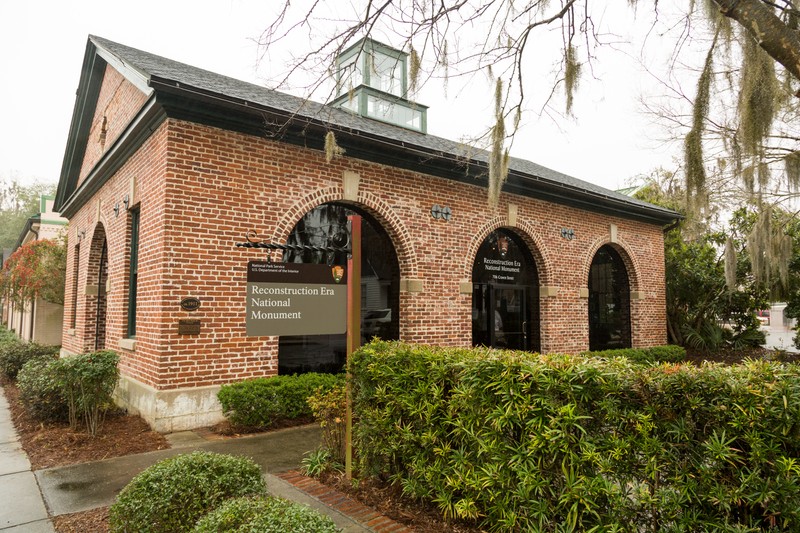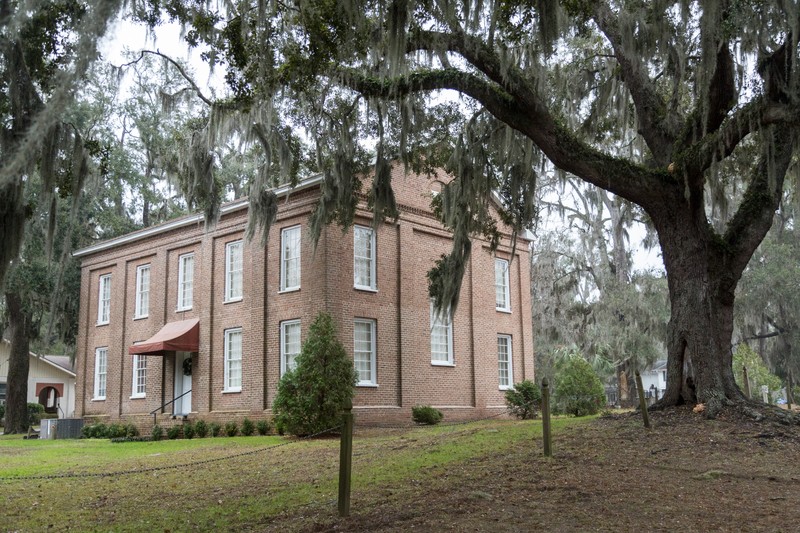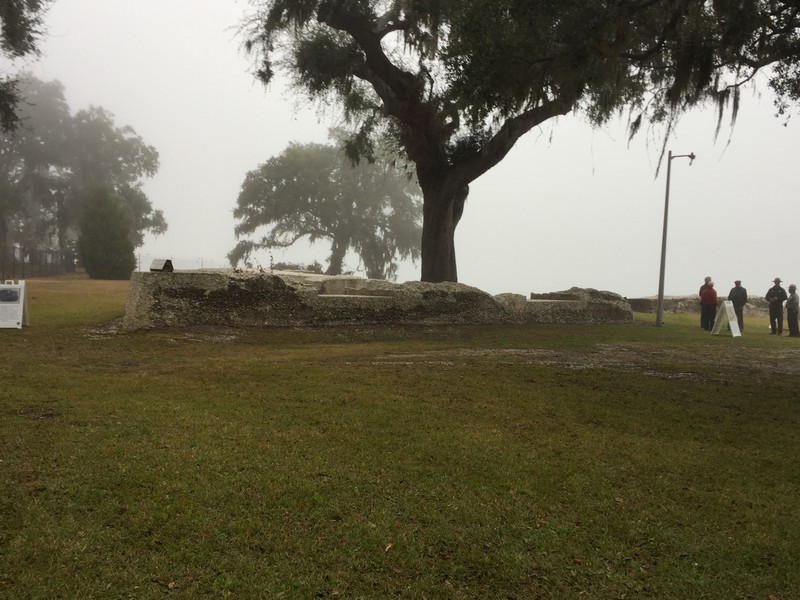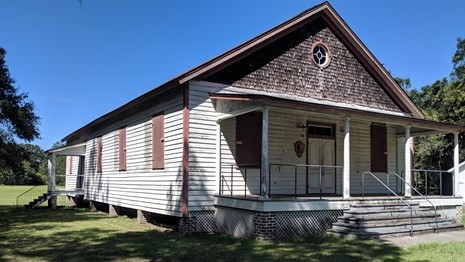Reconstruction Era National Historical Park
Introduction
Text-to-speech Audio
The Civil War was followed by a period when the federal government and numerous organizations grappled with the question of how to support formerly enslaved persons as they sought employment and education. This period is known as the Reconstruction Era, and the events of this period are key to understanding American history. Beaufort and the Port Royal Sound region was one of the first places in the country where the federal government grappled with these questions after the United States Army captured the city in November 1861. For this reason, the city became known as the "birthplace of Reconstruction." To preserve and honor this history, Reconstruction Era National Monument was established in 2017; then in 2019, it was declared a National Historical Park. The park consists of four sites in the Beaufort area: the former Beaufort Firehouse which is now the park's visitor center, Penn Center which is the location of one of the first schools for formerly the enslaved, the Brick Baptist Church which is the oldest church on St. Helena Island, and Camp Saxton. Camp Saxton is the place General Rufus Saxton read the Emancipation Proclamation to the 1st South Carolina Infantry, a regiment consisting entirely of African American troops, and hundreds of formerly enslaved persons on January 1st, 1863.
Images
The Old Firehouse is the park's visitor center.

Built in 1855, Brick Baptist Church is the oldest church on St. Helena Island and was the location of the first school (Penn School) for former slaves.

The ruins of Fort Frederick, pictured here, are just south of the Camp Saxton site, which was a Union camp from November 1862 to late January 1863. On January 1st, the Emancipation Proclamation was read to a large gathering of former slaves and military and civil officials. The all-Black 1st South Carolina Volunteer Infantry Regiment was formed and trained at the camp..

Penn Center is a cultural and educational organization dedicated to promoting African-American history. It is the site of one of the first schools for former slaves called Penn School.

Backstory and Context
Text-to-speech Audio
Reconstruction in Beaufort
As Union forces approached Port Royal Sound in November 1861, the white residents of the city and neighboring rice and cotton plantations—who comprised less than 20% of the population—fled before Union forces arrived. The 10,000 or so slaves in the area remained. This situation presented a unique opportunity for the federal government to implement a social program called the "Port Royal Experiment." With assistance from Northern antislavery, religious, and missionary organizations, the government began a process to reintegrate the former slaves of the region into society by providing education, citizenship, land ownership, and male suffrage.
One successful former slave to emerge from this effort was Robert Smalls (1839-1915), who became a prominent state and national politician, serving in the South Carolina legislature and in the U.S. House of Representatives. In the end, Reconstruction failed as whites eventually regained power in the South and implemented segregationist Jim Crow laws and policies that eliminated the gains of the Reconstruction Era.
Calls to establish the park originated from former Secretary of the Interior Bruce Babbitt in 2000. The idea didn't catch on until 2016 when the effort was revived by Babbitt, U.S. Representative Jim Clybourn, and others.
Penn Center
Located on St. Helena Island, Penn Center is a cultural and educational center whose mission is to preserve and promote African American culture and history. It is the location of one of the first schools (see below) for freed slaves in the country. Called Penn School, it was established in 1862. There are several buildings on the Center campus, but the oldest is Darrah Hall and it was built in 1903. Penn Center is not managed by the National Park Service but Darrah Hall is. Penn Center was also where the Southern Christian Leadership Conference held its Citizenship Education Program during the Civil Rights Movement. Doctor Martin Luther King Jr. and others organized the March on Washington and the Poor People's Campaign here.
Brick Baptist Church
Brick Baptist Church was built in 1855 and is also located at the Penn Center. Constructed by slaves, it was first used by white planters before being established as Penn School in 1862 by missionary teachers Laura Towne and Ellen Murray. Many fingerprints of the slaves who made the bricks are still visible. The church, which is still active today, is the oldest church on the island. It is generally not open to visitors.
Camp Saxton
Listed on the National Register of Historic Places, Camp Saxton was established in November 1862 on Port Royal Island. The campsite is located on the grounds of the Beaufort Naval Hospital, which is north of the Fort Frederick Heritage Preserve (map). The preserve contains the remnants of a small fort built by the British in the 1730s. These ruins were later used as the foundation for Camp Saxton dock. The all-Black 1st South Carolina Volunteer Infantry Regiment, one of the first Black regiments in the army, was formed and trained here. As stated above, Camp Saxton was the site of a reading of the Emancipation Proclamation to a large crowd of former slaves, civil and military officials, and missionary teachers. The event was held in a large grove of oak trees; one is known as the "Emancipation Oak Tree." The Union left the camp in late January. Visitors cannot visit the site since it is on government property but park rangers do offer tours of the Fort Frederick site.
Sources
"A Timeline of Our History." Penn Center. Accessed February 12, 2021. https://www.penncenter.com/explore-penn-centers-history.
Dumain, Emma. "Just under the wire, Obama establishes national monument to Reconstruction era in Beaufort County." The Post and Courier. January 12, 2017. https://www.postandcourier.com/news/just-under-the-wire-obama-establishes-national-monument-to-reconstruction/article_cb26b062-d91b-11e6-bf8b-7fd195453416.html.
"History & Culture." National Park Service - Reconstruction Era National Historical Park. Accessed February 12, 2021. https://www.nps.gov/reer/learn/historyculture/historyculture.htm.
"How the Reconstruction Era Park came to Beaufort." City of Beaufort. Accessed February 12, 2021. http://www.cityofbeaufort.org/CivicAlerts.aspx?AID=394.
Power, J. Tracy. "Camp Saxton Site." National Park Service - National Register of Historic Places Nomination Form. February 2, 1995. http://www.nationalregister.sc.gov/beaufort/S10817707057/S10817707057.pdf.
"Presidential Proclamation: Establishment of the Reconstruction Era National Monument, by the President of the United States of America." National Parks Service. Last Updated January 13, 2017. Accessed February 12, 2021. https://www.nps.gov/reer/learn/proclamation.htm.
All images via the National Park Service
